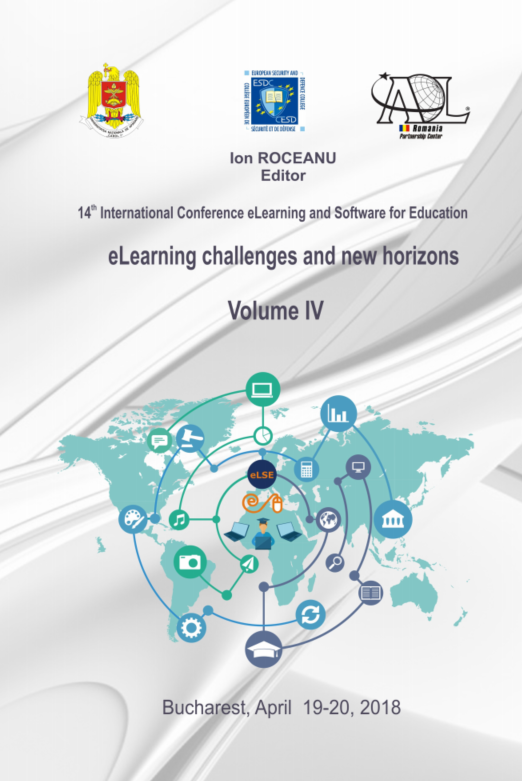Model of Innovation and Creativity in the Exchange Between Universities and Business Field
Model of Innovation and Creativity in the Exchange Between Universities and Business Field
Author(s): Rocsana Bucea-Manea-Țoniș, Luminița Pistol, Radu Bucea-Manea-ȚonișSubject(s): Social Sciences, Education
Published by: Carol I National Defence University Publishing House
Keywords: model of innovation; virtual reality; e-learning; work-life balance; communication;
Summary/Abstract: In a very busy society, e-learning is not a trend, but a must, because it facilitates distance interaction through virtual networks, social networks, forums and virtual reality (VR) facilities. The future of e-learning is to simulate reality by virtual reality, placing students in real life situations (e.g. Sims game). ICT students have a multitude of learning and entertainment programs, while using a gaming platform where the action is not realized by the mouse, but by editing comments in a structured / procedural manner, such as For i from one to n, hit the opponent. Those who study medicine learn anatomy and how to make surgeries through VR. Those who study chemistry can experiment with dangerous substances in a safe environment, due to VR. Those who studies languages may be transported in the Elizabethan times, for example, with the help of holograms. And so on... Modern universities have to adopt these technologies and to integrate them in every field of learning. They have to collaborate with the business environments, be one step ahead of them, and invest in research. The business environment has to ask universities for solutions to their problems, and the business has to offer the infrastructure for research in universities, because the young students are very creative. The article offers a model of innovation and creativity in the exchange between universities and the business environment. A deep understanding of the human psychology and the needs of spiritual evolution helps us move forward in the context of circular economy, for a better future for the next generation.
Journal: Conference proceedings of »eLearning and Software for Education« (eLSE)
- Issue Year: 14/2018
- Issue No: 04
- Page Range: 113-120
- Page Count: 8
- Language: English

